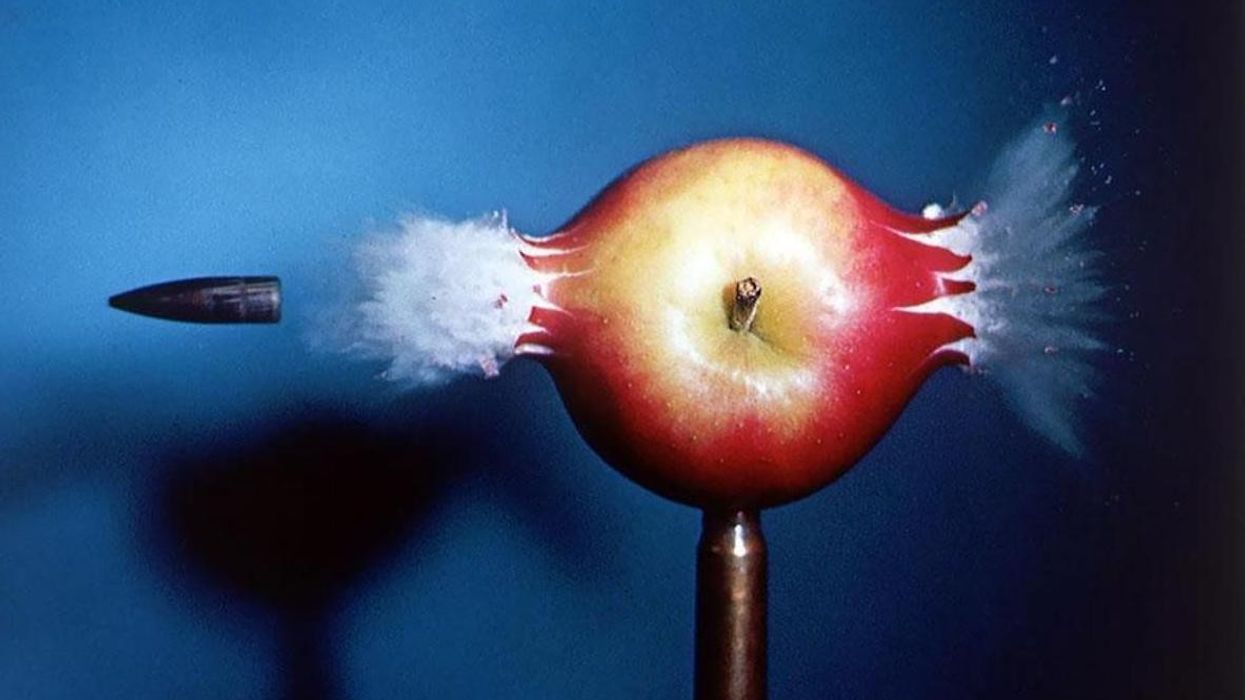5000 ft/s at 25 Million FPS: The Mechanics of Ultra High Speed Cameras
A camera that can shoot 25 million frames per second is impressive, but one that can capture and track bullets and tank shells traveling at 5000 feet per second is incredible.

Who doesn't love high-speed footage? I don't care if it's a video of a water balloon popping, a match igniting, or somebody getting slapped in the face, if it's super high-speed, I want to see it, especially if the camera tracks the paths of superfast objects, like bullets and tank shells. But have you ever wondered how in the world a camera can follow the movements of a projectile traveling at a mile per second? It seems impossible, even for a device that can shoot tens of millions of frames per second, but Paul Shillito of Curious Droid explains the technology and mechanics behind the ultra high-speed cameras that can pull off shots like this in the video below.
So, the answer is—mirrors. I was a little disappointed to find out that it wasn't some high-level elven sorcery, too, but learning not only how the rotating mirrors on these cameras work, but also the history of high-speed image capture more than made up for that.
From the rotating mirrors of the C4 camera, which was built to capture British nuclear tests at the end of WWII, to the high-speed cameras of today that utilize motion tracking technology, it's clear that the limits of image capture have only scratched the surface of what is possible.
Source: Curious Droid











